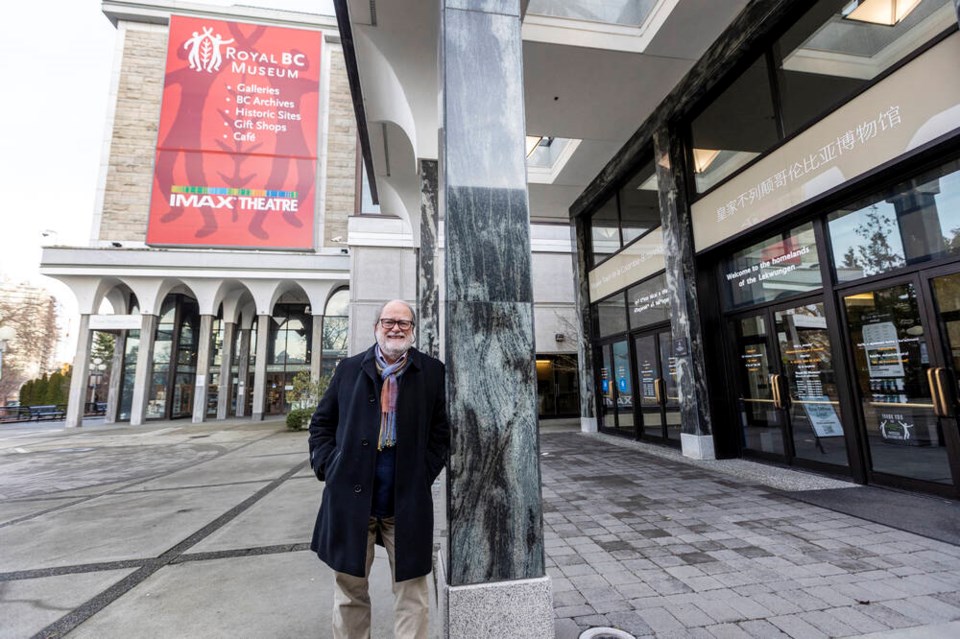Long-time museum champion and former Victoria city councillor Martin Segger is urging the Royal B.C. Museum to reinstate free admission as the institution plots its future.
Scrapping admission fees should be the first move to rebuild the trust of British Columbians — “a trust that was betrayed when admission fees were imposed for the first time in 1987,” Segger said Monday.
“This act squandered nearly 100 years of philanthropic support, volunteerism, collections donations and community support.”
When entrance fees — $5 for adults, $3 for seniors and youth, and $1 for children — were first introduced almost 36 years ago, hundreds of people protested outside the museum, and a petition got almost 10,000 signatures in one week.
But not everyone is in favour of turning back the clock.
Paul Nursey, chief executive of Destination Greater Victoria, rejected the idea of free museum admission, saying it would be “ruinous government-subsidized competition” for existing attractions.
“Anything of value needs to have a price put on it,” he said. “From a private-sector perspective: Not in favour.”
Jeff Bray, Downtown Victoria Business Association executive director, questioned whether it is realistic to bring back free admissions, saying that somebody would have to pay for that.
He noted that historically, the province’s grant to the museum has not covered operating costs.
According to annual financial statements, the province contributed $11.8 million to the museum in the year ending March 2022 — about 55 per cent of its core operating budget.
Segger made his comments during dialogue sessions being held as the museum examines how to modernize and looks for ways to operate that reflect all citizens.
The province and other stakeholders should be involved in this endeavour, said Segger, whose museum experience includes serving as director of UVic’s art museum and gallery and developing its cultural resource management program.
“I think, ultimately, the discussion is going to have to be with the people of British Columbia with the provincial government and government agencies as well,” he said.
“This is not for the Royal B.C. Museum to go out and solve by itself.”
The Belleville Street institution has been through an upheaval of sorts over the past year or so: Senior staff have left, and concerns have been raised about First Nations representation. The third-floor galleries were shut so they could be decolonized, and a $789-million rebuild was announced last year — only to be dropped following an outcry.
Museums are first and foremost about public service, Segger said, suggesting museums have moved toward business plans based on being economic generators and supporting tourism — and away from their fundamental roles as educators and researchers.
“Here’s the opportunity to take a very serious look at where the museum is, where it wants to go and where it is in the context of where other museums are in the world, and where we are heading,” he said.
Fundamental questions, with clear ideas about the intention of the museum, should be answered, Segger said, noting the trend in world-class museums is to return to basic principles, adapting them to the modern digital age.
“I don’t have all the answers, but I think we certainly have a lot of the questions.”



